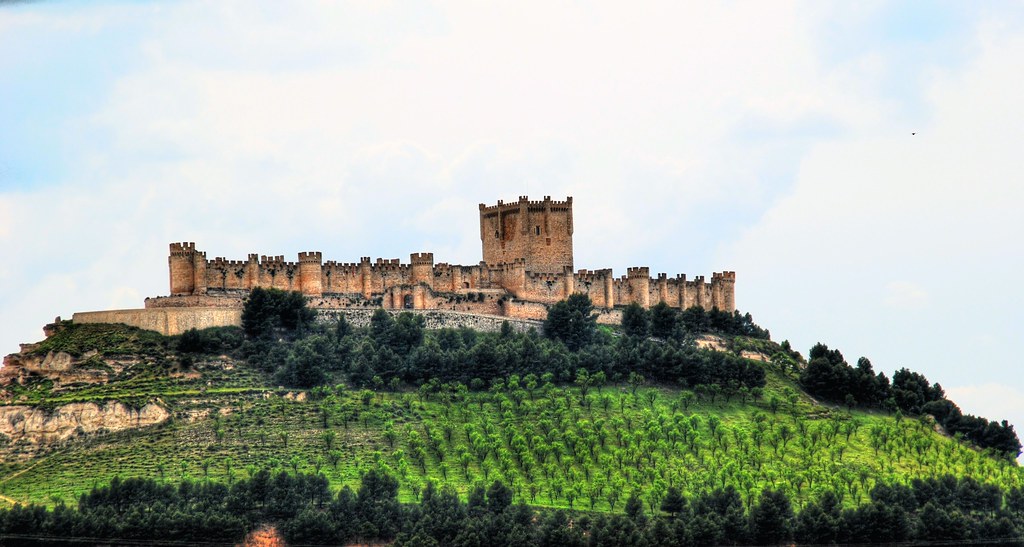
It’s that time of year again: la vendimia, the harvesting of grapes in various parts of Spain, from Jerez to Rioja and Rías Baixas to Penedés. And north of Madrid, winding 115 kilometres (miles) through the heart of the region of Castile-Leon (and of the entire Iberian peninsula, for that matter), the Duero River traces a route through not only some of Spain’s finest vineyards, but some extraordinary cultural, historic, and natural heritage. In short, a European wine country package par excellence.
Bridging the provinces of Segovia, Burgos, Soria, and Valladolid and including more than 30 wineries as well as historic villages and towns of golden stone (most central of which is counted Aranda del Duero, in Burgos), home to many dozens of distinguished monument and museums as well as a lovely variety of lodgings, restaurants, and spas.

Highlights include Valladolid province’s exquisite 12th-century Santa María de Valbuena Abbey and another, the Augustinian Santa María de La Vid in the province of Burgos; the 16th-century Collegiate Church of our Lady of the Assumption in Roa de Duero, Burgos; majestic, crenellated Peñafiel Castle with its Provincial Wine Museum (top); Haza‘s evocative ruins of castle and town walls; the 16th-century Plateresque Avellaneda Palace of the counts of Miranda in Peñaranda de Duero; the mediaeval underground wine caves of Caleruega and Aranda (above); the Sheepswool Interpretations Centre near the Burgos town of La Horra; Soria’s Romanesque Theme Park, (a project centred on the regions rich heritage of Romanesque architecture); and the Hoces del Río Riaza Nature Reserve in northeast Segovia.
And of course as you would expect in a land that produces such luscious fine wine, the eating is exceptional in these parts. The Ribera del Duero reds and rosés make a perfect pairing for the local suckling lamb, prepared in woodburning ovens, as well as its savoury sausages, its roasted peppers, sopa castellana (Castillian garlic soup), mushroom scrambled eggs, roast lamb cutlets with vine shoots, game dishes of rabbit hare, and pheasant; and sweets such as empiñonados (almond and pine nut cookies); creme-filled puff pastry; and yemas (a kind dense tartlet based on egg yolks).
Fall of course is a spectacular time to visit (as is spring), though really this is one of those regions where every season has its charms. But when planning a visit you might want to pay special attention to the local festival calendar (see website below), like for example Semana Santa (Easter week) in Roa and Aranda del Duero; August’s San Roque and Assumption festivals in Roa; Mediaeval Week in San Esteban de Gormaz; and Fiesta Romana in Baños de Baldearados, Burgos, celebrated in August in honour of the Roman god of wine Bacchus.
More information in English: www.RutadelVinoRiberadelDuero.es.
images | David Sanz, David Adam Kess

